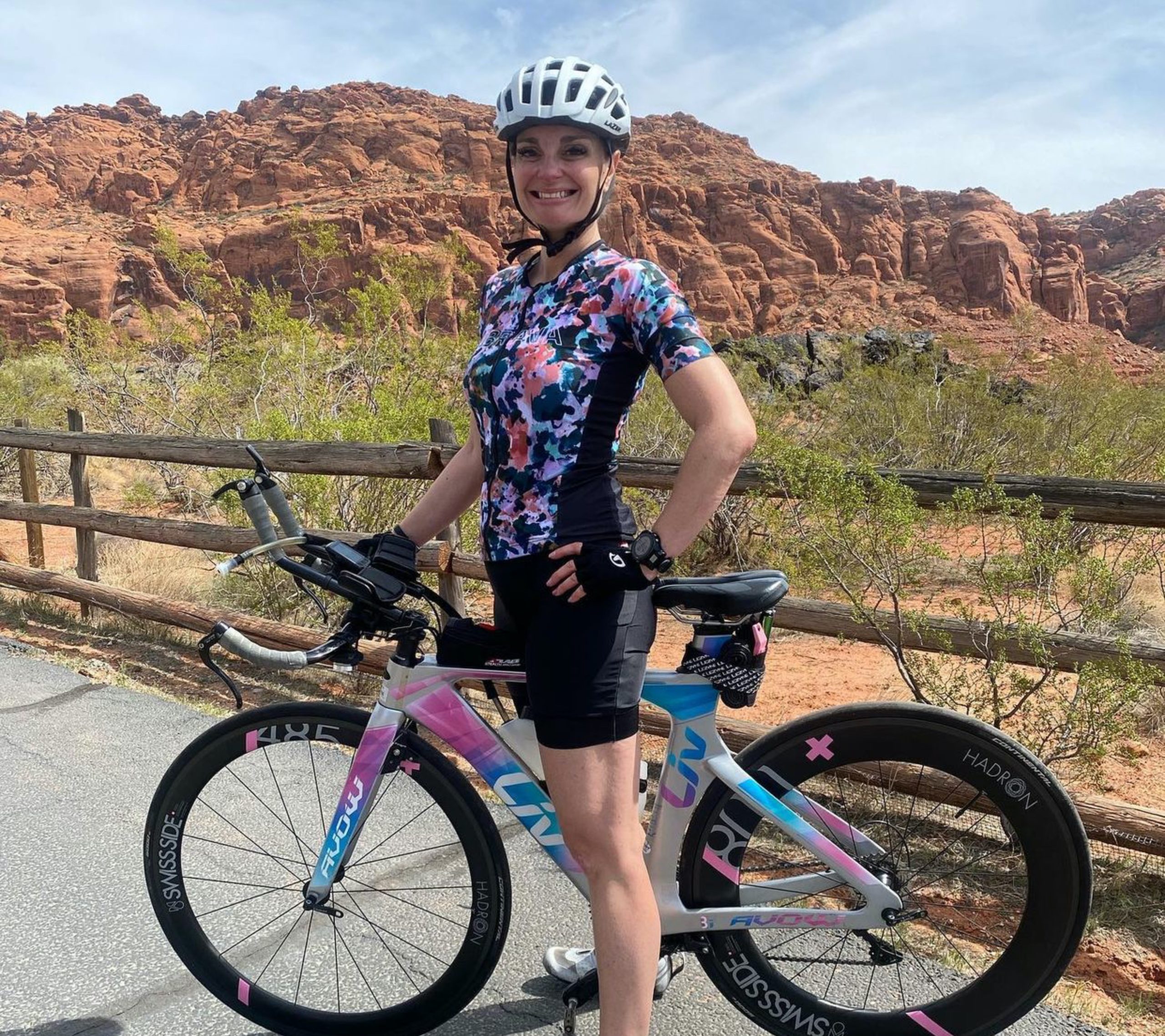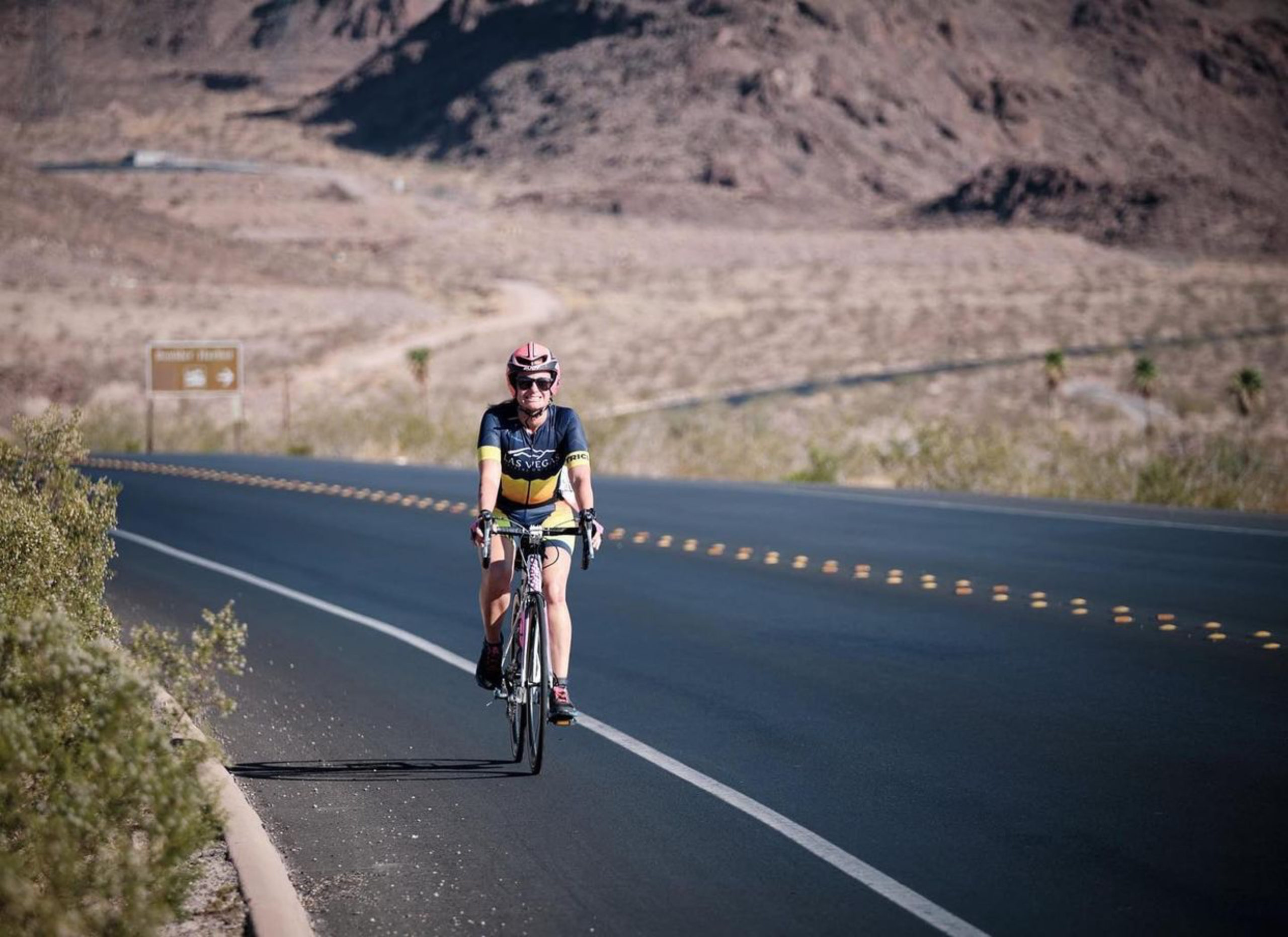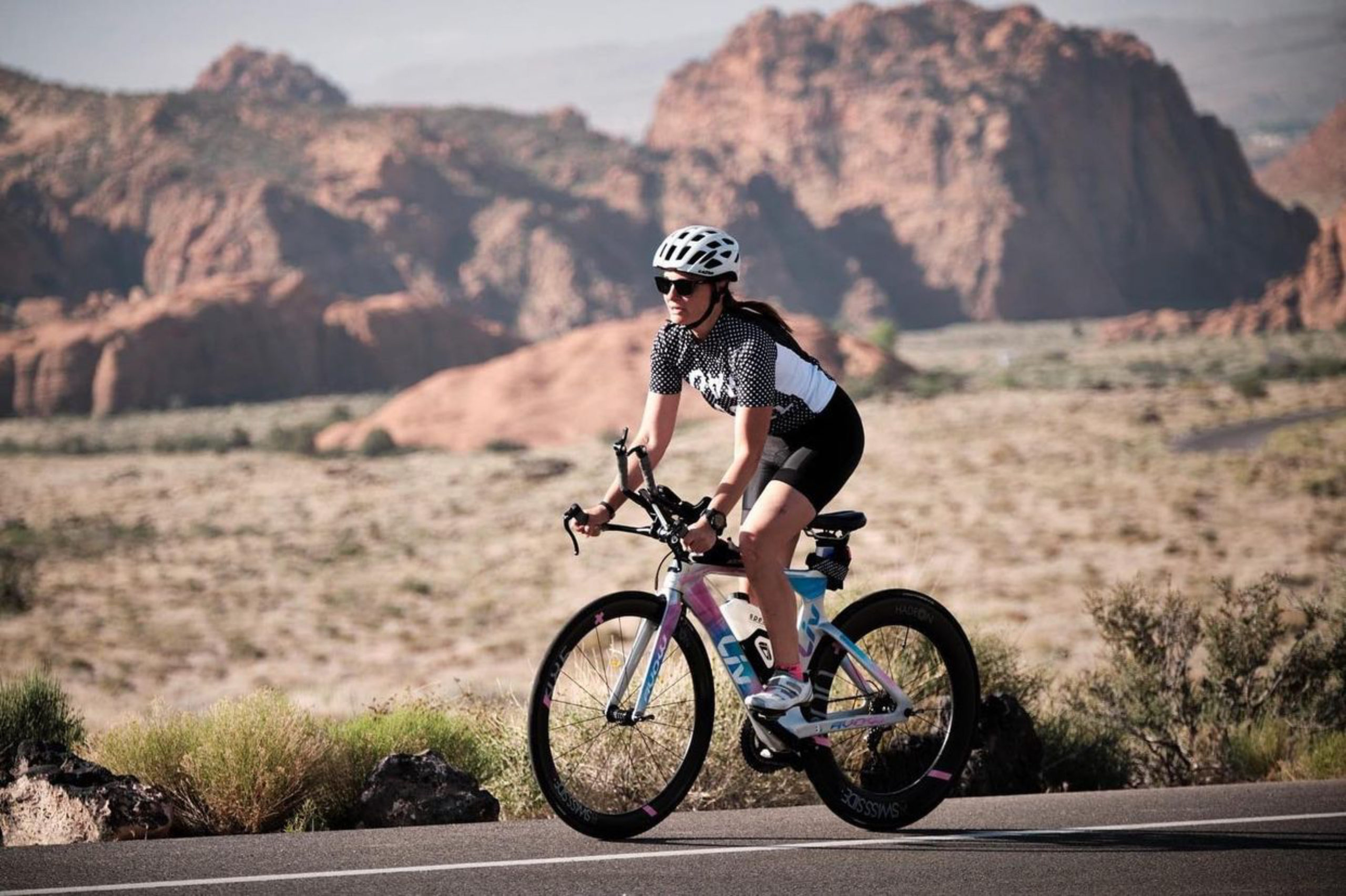Descending Downhill with Speed and Confidence
Las Vegas Shooting Survivor and Age Group triathlete Christina Gruber has tackled Some of the most challenging situations, fast downhill descents is just one.

For those who may not know her story, Christina Gruber is the definition of strength and perseverance. She is a survivor of the Las Vegas, Nevada shooting, and knows what it takes to be strong both mentally and physically.
Pushing her body and mind through the hurdles of triathlon is in part how she copes with the mental trauma she has from that fateful night. It is her outlet when the fear and uncertainty of Vegas resurfaces. It has helped her heal.
Her athletic career began in 2008, when Gruber took up running to manage the stresses created by life and work. Training and racing became a core part of who she was.
“I did loads of half marathons and full marathons,” said Gruber. “My main focus was not on finishing times or qualifying for anything, I just wanted to train.”
In 2016, a close friend introduced her to triathlon. “Triathlon is something I’ve always wanted to do. I just got the idea and kept running with it.”
She hired a coach and completed her first sprint triathlon in 2017. It was then Gruber knew she’d discovered something much larger than herself.
“I can’t imagine my life right now without the training. I’m my best self when [training] just gives me what I’m supposed to do and my job is to just stay consistent.”
This new found sense of structure and stability became Gruber’s foundation, something she could always fall back on. “I always say that triathlon saved my life,” said Gruber.
But after sustaining a crash while training for Hawaii 70.3 in 2021, she began to struggle with the psychological effect the fear of descent would bring. Gruber was descending down a fast section of road when her front tire punctured, causing the tire to jam into the brake calipers, sending her over the handlebars. The result could have been much worse, but she only sustained minimal scrapes and cuts.
“Descending was always a challenge, every time I would always ride the brakes and say a prayer,” shared Gruber. This pushed her over the edge.
Since that day, Gruber’s phobia has only gotten worse. One month later, at the Hawaii 70.3 race, Gruber was blown off her bike due to high wind gusts, again during a descent.

A Breakthrough
Gruber knew this fear was not something that would go away on its own. She came across Neil Edge, founder of Neil Edge Mental Performance coaching, in the Ironman St. George Facebook group. One of the hallmarks of the St. George course is the stunning four mile climb through Snow Canyon Park, featuring a 1,100-feet of elevation gain. What goes up must come down, and Gruber was apprehensive.
She enrolled in Edge’s Overcoming Fear of Fast Descents course and over the next four weeks, Gruber committed to four, one hour sessions with Edge that focused on a curriculum designed specifically for this scenario.
Step 1:
“The first step was understanding what fear is,” commented Edge. “Learning the mechanics of fear allows us to understand how it works and how to better control it.”
For Gruber, this meant digging into and re-living many of the experiences she had and what those feelings were in detail. “We talked about my fears first and how unrealistic it was for all my fears to come true.” For Gruber, those fears included:
- Another blowout while riding fast down hill
- Brakes suddenly stop working
- Hitting an unexpected bump in the road causing her to lose control
- Going over the handlebars
Step 2:
The next step was reframing. Said Edge, “Next we used logic and reason to discuss and debunk those fears together. What is the likelihood of your wheel falling off, let alone at the exact moment you are descending?”

Step 3:
Third is all about confidence through education. “We empowered her with the knowledge of how to safely and effectively ride downhill,” said Edge. Many novice riders never receive any sort of formal training when they take up cycling, leaving the majority of these athletes unaware of proper technique when descending.
How to descend correctly:
- Soft arms and hands
- Sit further back on the seat
- Feet positioned at three and nine o’clock
- Look in the direction you want to go and not where you are
- Control the speed on the way into any turns and let it go on the way out
- Awareness of the course and what’s ahead
- And SMILE
“By providing this background, we were able to build up her confidence to take on her descent,” Edge added.
Step 4:
Lastly is the process of Systematic Desensitization. Here Gruber worked with Edge to build up her exposure to descending through actual riding as well as imagery via photos, videos or watching other riders. “The more she was exposed to riding downhill, whether on her own or through others, the more prepared her mind would be to handle it.”
Gruber’s program culminated in an incredible climax, a descent down Snow Canyon. She had ridden this route before however, she took it slow and rode her brakes the entire way. This time was different, she said, “I did my breath work, used positive affirmations, I even used Neil’s tactic of singing a song to get my mind in the right place. At the bottom of the hill, I was 10 MPH faster and did not touch the brakes at all.”
. . .
To date, Gruber has completed two half Ironmans and has her sights set on Oregon 70.3 and Chattanooga 144.6, both in 2022.

